-
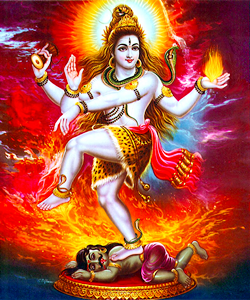 Pancha Sabhai Sthalams / Sthalangal
Pancha Sabhai Sthalams / Sthalangal
Pancha Sabhai Sthalangal refers to the temples of Lord Nataraja, a form of Lord Shiva where he performed the Cosmic Dance. Pancha indicates Five, Sabhai means hall and Stala means place. All these temples are located in Tamil Nadu, India.
-
 Pancha Bhoota Stalas
Pancha Bhoota Stalas
Pancha Bhoota Stalam or Pancha Bhoota Stala refers to the five Shiva temples, dedicated to Shiva, the most powerful Hindu god among the thirimurthis and also the most mercyful among them, each representing the manifestation of the five prime elements of nature- land, water, air, sky, fire.
-
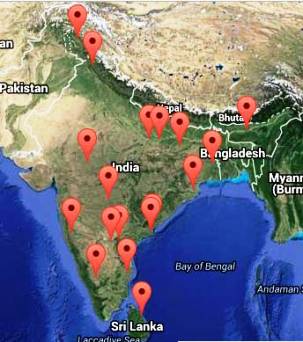 18 Shakti Peethas / Asta Dasa Shakti Peethas
18 Shakti Peethas / Asta Dasa Shakti Peethas
Astadasha Shakthi Peetas Lord Brahma performed a yagna to please Shakti and Shiva. Goddess Shakti emerged, separating from Shiva and helped Brahma in the creation of the universe. Brahma decided to give Shakti back to Shiva. As such, Brahma's son Daksha performed several yagnas to obtain Shakti as his daughter in the form of Sati.
-
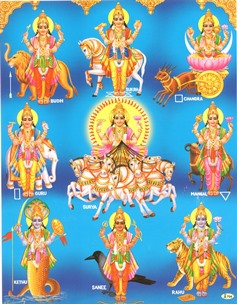 Navagaraha Sthala or Temple
Navagaraha Sthala or Temple
Navagraha Suriyan (Sun), Chandran (Moon), Chevvai (Mars), Budha (Mercury), Guru (jupiter), Sukra (Venus), Sani (Saturn), Rahu (north Node) and Ketu (South Node) are called Navagraha.
-
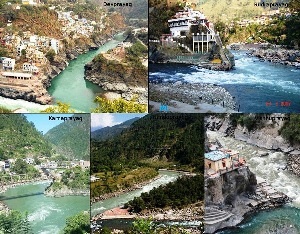 Panch Prayag or Five Confluences
Panch Prayag or Five Confluences
Panch Prayag means "Five Confluences". It refers to the five confluences which takes place at Vishnu Prayag, NandaPrayag, KarnPrayag, Rudraprayag and Devprayag respectively to form river Ganga. Ganga, the most sacred of Indian rivers, is worshipped as the life-giving goddess, which brings salvation to this land.
-
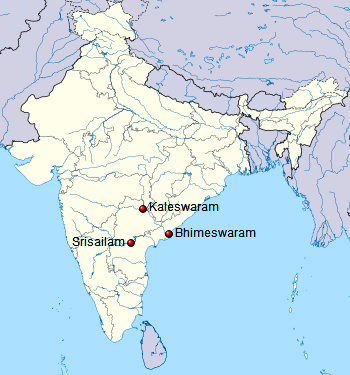 Trilinga Desam or Trilinga Kshetras or Trilinga Temples
Trilinga Desam or Trilinga Kshetras or Trilinga Temples
The Etymology of Telugu is thought to have been derived from trilinga as in Trilinga Desa, "the country of the three lingas" and as per the Mythology, The Lord Shiva has been descended as Shivalingam on three sacred mountains.
-
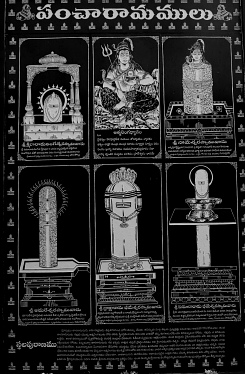 Pancharama Kshetras
Pancharama Kshetras
The Pancharama Kshetras or the Pancharamas are five ancient Hindu temples of Lord Shiva situated in Andhra Pradesh. The Sivalingas at these temples are made from a single Sivalinga.
-
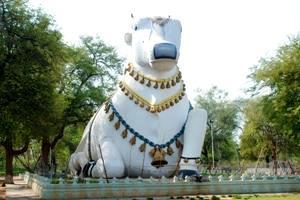 Nava Nandi Darshan
Nava Nandi Darshan
Nava nandi Tour - Get details of nava nandi tour or nine temples of Lord Shiva and tour package operators which you can start from 6 in the morning
-
 Shakti Peethas
Shakti Peethas
There was a king named Daksha, whose daughter was Sati. When Sati grew old she performed intense penance to attain Shivji as her husband. She married Lord Shiva against the wish of her father.
-
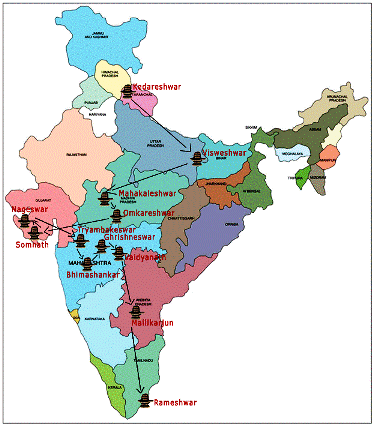 Jyotirlinga Shrines
Jyotirlinga Shrines
Worship of shivalinga is considered the prime worship for the devotees of Lord shiva. Worship of all other forms is considered secondary. The significance of the shivalinga is that It is the resplendent light (flame) form of the Supreme - solidified to make the worship of It easier. It represents the real nature of God - formless essentially and taking various forms as It wills.